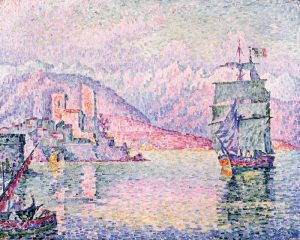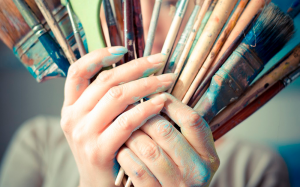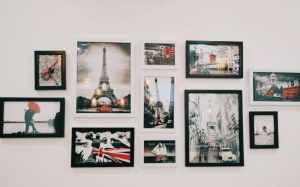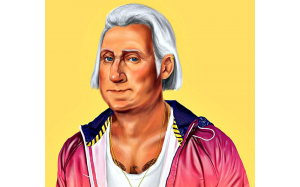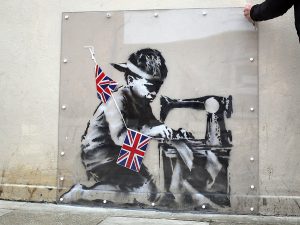Artistic process
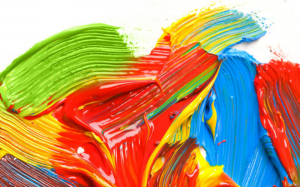 How does an artist work?
How does an artist work?
Usually he answers this question – “this is a great mystery”.
Kandinsky scoffed at the Impressionists, who were proud that they could not explain what they were painting. And he boasted that he can speak sensibly and even prophetically about his art:
“The artist will soon be proud to be able to explain his works, analyzing their design, that we are already standing on the threshold of an era of expedient creativity; and that this spirit of painting is in organically direct connection with the era of the new spiritual kingdom already begun. ”
Here is a simple scheme of the “single act of activity”:
First, the artist finds the idea of a new picture and collects in his mind the material for it. Then translates the source material into a finished work of art – into a picture. To translate the source material into the picture, the artist must set such a goal. Further, he needs to understand the problems that impede the achievement of the goal, and translate them into tasks. In order to translate problems into tasks, it is necessary to find mental and activity means, starting from metaphysical means: categories, concepts, approaches, concepts, schematisms, semiotic structures, etc. to physical materials: canvases, paints, brushes, etc.
In order to create a picture, the artist uses as the internal means of activity:
(1) ability, talent, genius
(2) personal value system
(3) experience, skills, skill
The artist uses as external means:
(4) categories, approaches, concepts, ideas, languages, schematisms, new methods, technologies, techniques, techniques, styles, etc.
Through the system
(5) operations the artist translates the source material (intention) into the picture. A special place among the “external” funds occupy
(6) library of knowledge.
This scheme of the “single act of activity” gives the first idea of the essence, means and character of the artist’s work in his personal value system. In particular, its value system includes as its main idea the language of painting: light, color, form, texture, design, composition, type of space, etc.
Only the language of painting artist’s value system is not exhausted. Thought and activity means and operations of activity also belong to values of the first magnitude.
The scheme makes it clear to the artist that in addition to mastery, he needs to build his own system of artistic values. And its ontological picture of the world.
The artistic process begins with this elementary sub-process. Before, he ended them. The collector, gallery, museum bought or did not buy the work, and the artist proceeded to a new one. But Ilya Kabakov, now successful, has set a different cultural standard. The artistic process ends only when the painted picture falls or does not fall into the museum.
Art articles.
The artist who sent the picture to the museum goes further. Making the second, third, etc. the paintings are complemented by purposeful author and viewer reflection and the second reflection of the author.
The third, fundamentally different sub-process of the artist must be considered the exhibition process. When he transfers the picture from the space of his workshop to the gallery space.
The artist himself always sees his work on the wall of the exhibition hall “differently” than in the workshop. And that he is especially “scary”, he sees it differently at group exhibitions, and even in the confrontation of the works of artists of “someone else’s school.” And this “new vision” of its work at the exhibition is another important moment of the exhibition process. In addition, new positioners are included in the process, the most important of them are the viewer and critic.
It seems to me a pure misunderstanding of the dispute – for it was conducted within the framework of the “old aesthetics” – between art practitioner A. Gehlen and the hermeneutic philosopher GG Gadamer (1960): I am extremely doubtful.
Yes, a painting is self-sufficient and does not need any comment – ideally. But, in reality, the work of painting is included in a complex artistic process and at least twice during the process: from the moment the artist conceived the painting to the exhibition in the gallery and, finally, the demonstration in the museum should be commented:
(1) a critic at an exhibition in a gallery identifying the meaning of a work, and
(2) an art historian of the museum, translating the meaning of the work into value.
The artist should ideally organize his work in the aggregate of all three processes in order to “replace” the positions of the critic and art historian. And directly “talk” with the audience. Comparing and contrasting the author’s works with each other, the viewer must learn to understand the meaning and significance of the work without the prompts of a critic and art critic.
The same scheme can be used to understand the fourth and fifth sub-processes.
The fourth is the reflexive movement of the artist from exhibition to exhibition with tracking changes in the audience’s attention and understanding of their works.
